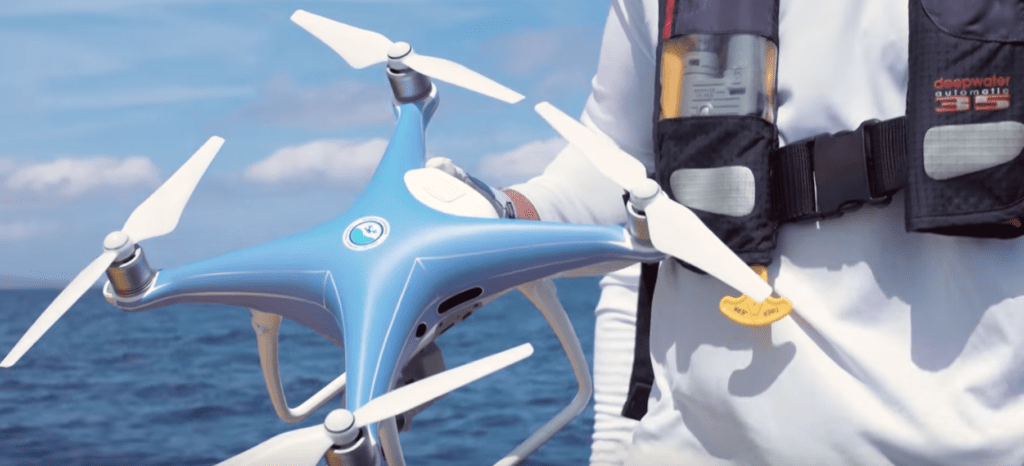We’ve written on several occasions about how drone technology is being used for marine research and conservation, particularly with efforts involving our oceans’ largest inhabitants: whales.
- You can read about Ocean Alliance’s work to capture whale data using SnotBot, here.
- You can read about Intel and Ocean Alliance using drones and machine learning to identify whales in real time, here.
- And you can take a look at some FLIR thermal footage of whales, here.
In all of these cases, drones are giving marine researchers a handy tool to learn about whales without disturbing them. Not to mention an easy-to-use observation and data collection system, in an environment that’s renowned for imposing practical and safety-related restrictions on scientists.
The work mentioned above – with marine conservation organization Ocean Alliance – has mostly been focused on using drones to help researchers build a bigger picture of whale health. SnotBot allowed the team to collect biological samples without the whales even noticing, providing valuable environmental data and a macro view of their health and habitats, for example.
The brilliant thing about drones is that, as well as being useful for gathering data over a long period of time for that macro view, they can make an impact in the moment.

Taking a more active role using drones
Recently another marine conservation organization, Oceans Unmanned, have been using drones in a more active way to save endangered whales from a very particular problem. Ocean Alliance’s SnotBot program can be seen as a way of seeing how human behavior impacts wales: whale snot collected by drone has information on ocean pollutants, for example.
Oceans Unmanned have been using drones to tackle that problem in its most tangible form: disentangling whales from fishing lines.
Each Autumn pods of humpback whales swim towards the warmer waters of Hawaii. While making that journey, they often come into contact with man-made hazards, from plastic trash to fishing lines. Sometimes these hazards can tangle up whales and prevent them from coming up to the surface for air.
Specialists from the National Oceanic and Atmospheric Administration (NOAA) work with local volunteers each fall to help as many whales as possible using a combination of small boats, well-trained teams and no small amount of courage to disentangle the whales.
But as you can imagine, trying to untangle 40-ton whale is no mean feat. These operations are dangerous for everyone and every whale involved.
Take a look at the latest DJI Story in the video below.
To help make the process safer response teams and whales, drones have been enlisted.
Oceans Unmanned founder Matt Pickett is a former manned aircraft pilot and NOAA sanctuary manager. His goal is now to implement drone technology for marine conservation purposes. The organization’s freeFLY program is a new initiative designed to provide aerial support using small drones during large whale entanglement response.
“In the past, we had to get close to the whales at least three times,” said Pickett. “Once to figure out where the animal was entangled, once to cut them free, and once to make sure the job was done right and nothing was left behind.”
Using DJI drones, Oceans Unmanned can significantly reduce the risk of these operations. Using quadcopters with decent cameras, both the initial assessment and final check can be done from above.
“It makes the entire process much safer for both the humans and the whales,” he said.
Malek Murison is a freelance writer and editor with a passion for tech trends and innovation. He handles product reviews, major releases and keeps an eye on the enthusiast market for DroneLife.
Email Malek
Twitter:@malekmurison
Subscribe to DroneLife here.
